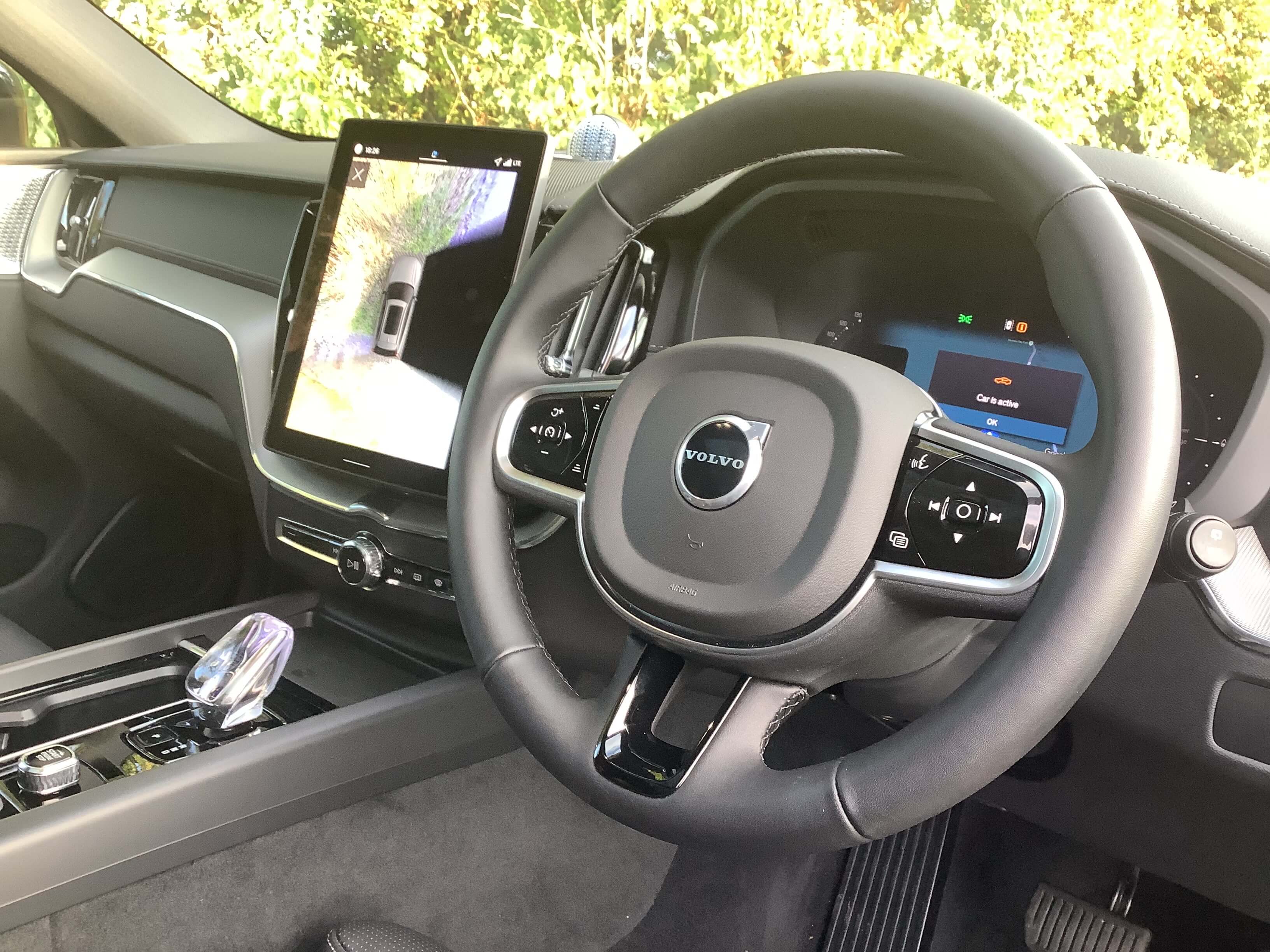
A Volvo designer once told me that “Volvo don’t do pig lipstick”. This, in case you didn’t realise, isn’t a reference to some obscure component deep in the lubrication system, but to the American phrase: “You can put lipstick on a pig, but it’s still a pig,” famously used by Barack Obama about his 2008 presidential opponent John McCain.
Perhaps, though I’ve seen a few, how can one put it, challenging Volvo designs in my time. They do, however, do what the industry used to call “facelifts” and now term “a refresh”. Which brings us to the Volvo XC60, now in its eighth year and on its second “refresh”. So, to retain some showroom appeal in the face of more up to date rivals, we have a bigger, 11.2-inch screen, an improved “UX” interface with Google software, crisper graphics, more luxurious materials, an excellent induction phone charger (which also boosts older smartphones) and an air purification system.
On the outside, we find a new fashionable grille featuring criss-cross lines (no lipstick), new wheel options, darker rear lights and some new colours for the paintwork, including a “Mulberry Red” which, to be fair, does look like a dark shade of lipstick. Drivetrains, including plug-in hybrids, and optional air suspension are unchanged, and the driving experience is virtually the same as the 2017 originals.

Now, the reasons why the XC60 is having its life extended are interesting and threefold. First, Volvo’s journey towards full electrification is taking a little longer than ideal. The small new EX30, including a swift and versatile “cross country” version, smallish EX40 and giant EX90 are all it can offer at the moment, leaving a chasm in the important SUV mid-market, where Tesla, VW group, Hyundai/Kia and BYD are dominant. In order to create a presence in this segment, Volvo have to soldier on with the XC60, until its fully electric, all-battery comes along, probably next year.
Second, there’s still a demand for the XC60, as there is for its larger sibling the XC90, both with a fairly loyal following. A company needs to sell cars that people want, provided it meets its battery-vehicle quota, and larger models tend to make more profit. The XC60 has been a familiar sight since the first iterations arrived in 2013, and has now overtaken the Volvo 240 series (1974-93) affectionately known as “the tank” or “snowplough” in total global sales – a remarkable achievement. In that sense the XC60 is the definitive Volvo, and that is why it has such a loyal fanbase. It does everything pretty well, and manages to be a practical SUV without either excessive size or any sporting pretensions. It is, like the Volvo estates that are also still on sale for the same reason of popular demand, very much a middle-sized car for a middle-class family approaching middle age. Hence its status in middle England.
The third reason for the forced longevity of the XC60 is geopolitical. Now that Donald Trump has slapped tariffs on cars from Europe and China, and scrapped the electric car mandate, it makes sense for Volvo’s parent Geely, a Chinese giant, to switch and expand production of the XC60 to their US plant in Charleston, South Carolina. The XC60’s production run could also rival that of the 240.
The Spec
Volvo XC60 Ultra Black Edition T8 PHEV AWD
Price: £69,555 (as tested, range starts at £55,360)
Engine capacity: 2.0l-petrol, 4-cyl + 18kWh battery, 8sp-auto 4WD
Power output (hp): 455
Top speed (mph): 112
0 to 60 (seconds): 4.9
Fuel economy (mpg): 282
CO2 emissions (WLTP, g/km): 23
Perhaps to prove a point about how “premium” an XC60 can be, Volvo lent us a top-of-the-range example in solid “smoke grey”, with “Black Pack” highlights and loaded with air suspension and the most potent combination of 2 litre engine and “clean” hybrid battery pack with plug-in capability, plus all-wheel drive. As is universally the case with PHEVs (plug-in hybrid vehicles), it is green and economical only to the extent that the user actually does plug the thing into the mains, preferably on the cheap tariff at home. In that circumstance, you could get 40 or 50 miles of electric-only motoring out of it. Otherwise it’s just a slightly thirsty big Volvo carrying heavy “empty” batteries around. So, the cheaper “mild hybrid” option makes more sense, unless you can capitalise on better benefit-in-kind tax rates.

The XC60 in any format is at its best on a long journey, where its ample performance and supple ride combine with those superbly tailored seats to leave you unstressed at the end of a multi-hour sprint. It handles surprisingly well, and is a perfectly civilised companion, but it’s those enduring Volvo values that sell it, and oftentimes, Volvo drivers aren’t that interested in what the competition is up to, but more interested in built-in safety. On the whole, they won’t mind that the quite stressed 2 litre engine can be a little intrusive when pressed hard, and is no match for refinement with its many all-electric competitors.
Good news: in January a new all-electric sibling, the EX60, will be revealed alongside a luxury ES90 saloon which promises a 435-mile range. Maybe one day it will succeed the 240 and XC60, and no one will call it a pig with lipstick on.







